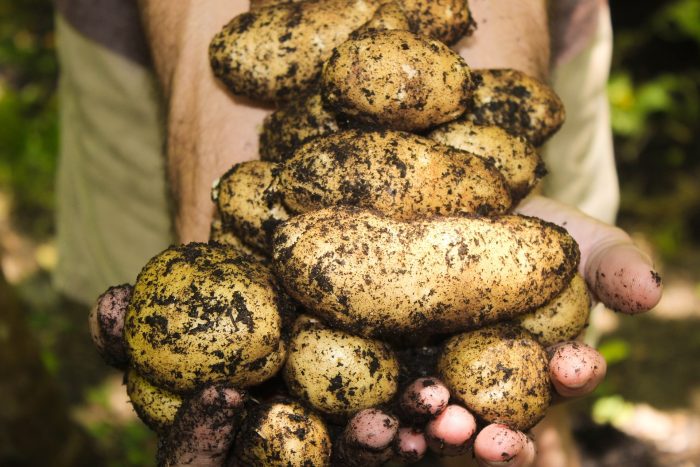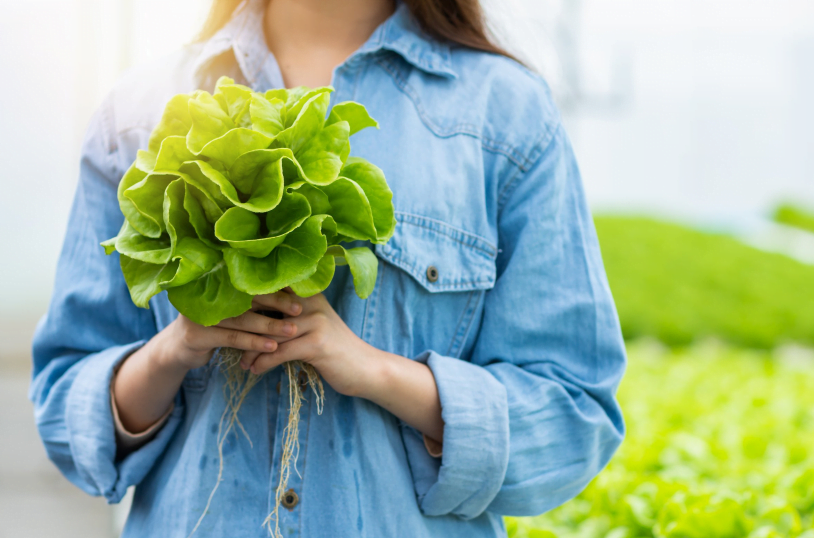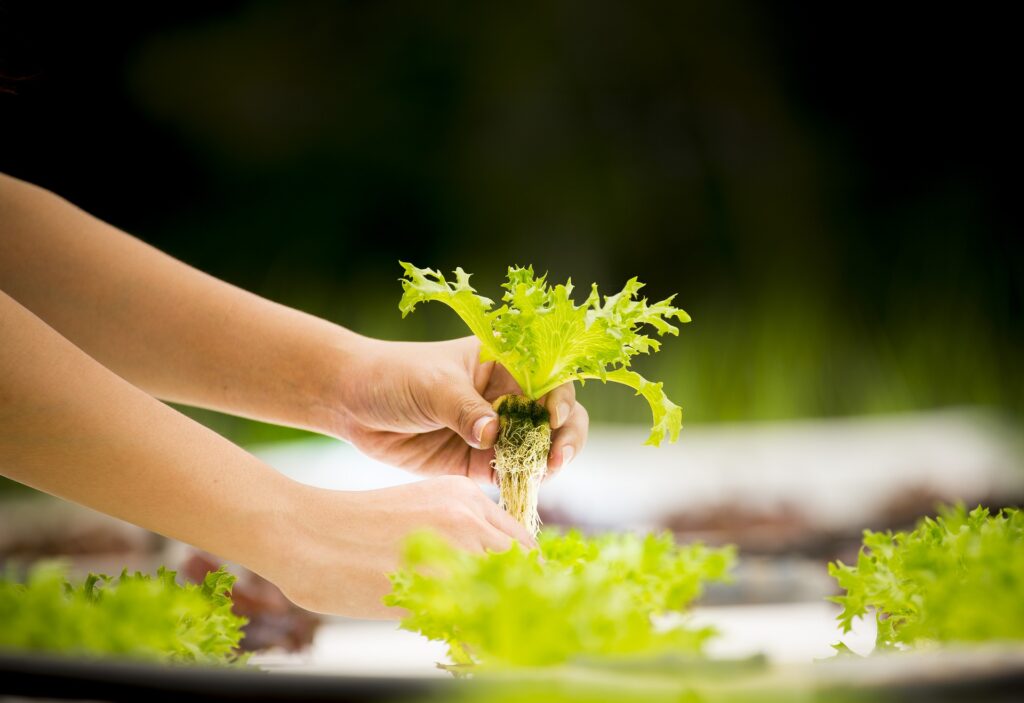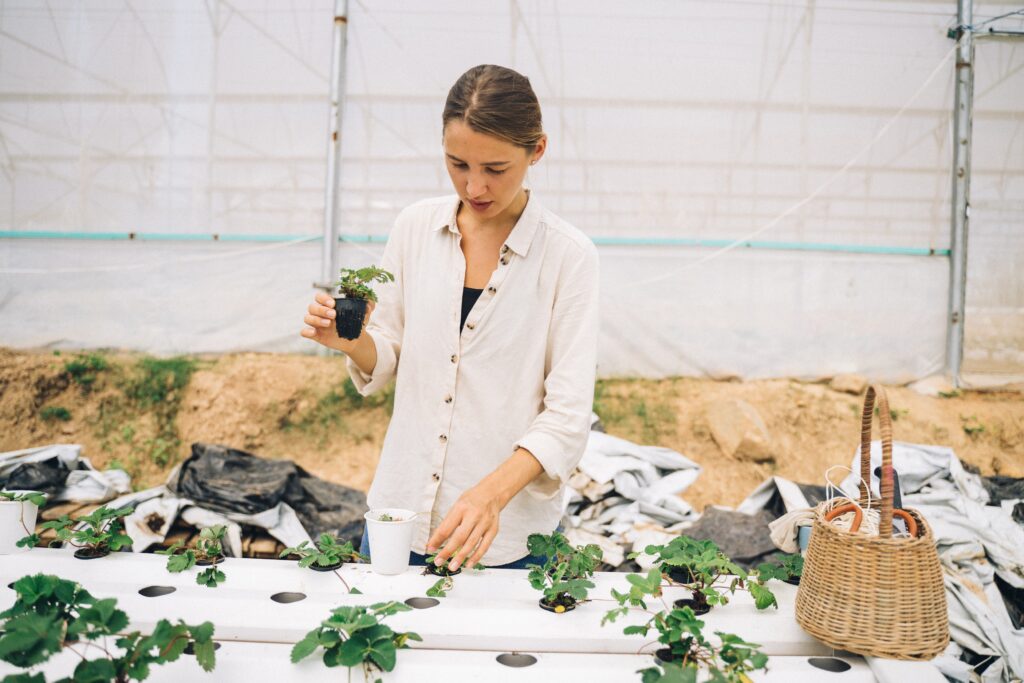Need some help growing potatoes? In this article, we’ll be talking about how to grow potatoes from eyes! Yes, even grocery store potatoes can be grown this way, though you can purchase seed potatoes too if you’d prefer a more rare or specific variety. Here’s how to do it.
Whole Potato or Portions?
There is some debate over this method, but you don’t have to do anything to a potato to plant it. You can, in fact, just put a whole potato in the ground and it will grow multiple plants.
Some people claim that they actually get MORE potatoes this way because the plants clump up and produces more tubers in a smaller space. Potatoes don’t mind being crowded at all and when it comes time to harvest your potatoes, you can just pull them up all together for more potatoes.
Or, you can cut up the potato into pieces as long as each piece has an “eye” on it which will turn into a plant sprout. You might even want to experiment with both methods to test your yields, but I prefer the whole potato approach.
How To Sprout An “Eye” Potato
Some people dislike store bought potatoes because they are misted with an “anti-sprouting” chemical which makes them last longer. However, if you do want to sprout them, you can just rinse this off and be good to go.
Sprouting potatoes is easy, and it’s likely already happened to you if you’ve left the potatoes a bit too long in the bag and started to see the eyes growing shoots! However, these shoots do not produce healthy plants because they have likely not gotten any light.
Instead, get a tray, egg carton, or anything else and place your potatoes with the eyes up. Place your potatoes in in a bright, cool location where they will not be subject to frost. A south facing window in a cool room is a good bet here. Temperatures in the 50-60 degree range is best for this to get the short, stumpy shoots we’re looking for.
By the way, even if you get bad sprouts, guess what! You can break off the bad sprouts and do it again. You can even grow green potatoes, so if you left some in your cupboard a bit too long – they can be useful again as plant seeds.
Within 2 to 4 weeks, depending largely on the temperature the potatoes are in, you should have sprouts.
(PS. Just in case you didn’t know, eating green potatoes is bad. These potatoes have high levels of solanine and could be poisonous, but there is no harm in using them to grow a new plant fortunately.)
Transplanting Your New Potato Plants
Once your sprouts have emerged, it’s time to plant them. If you’ll be planting them outside then early spring is the ideal time to get new potato plants in the ground. However, you can grow them in containers year round in a heated green house or even indoors with plant lights.
If you will be container gardening, choose a container which is at least 24 inches deep. You’ll want to give your tubers plenty of room to fan out and grow to decent eating size. (5 gallon buckets are popular for this method.)
For those who want to plant outside, you’ll need to prepare a garden bed space. In our potato growing secrets article, we talked about some tips which help you grow large potatoes, and one of those tips was loose soil.
Soil which is tightly packed will stunt the growth of your tubers. So, measure out your garden bed, and begin turning and sifting the soil in an effort to loosen it up. You’ll also want to make sure that you remove any rocks or old roots which will result in potatoes being weirdly shaped.
Potatoes need at least 6 inches of depth, so it’s best to sift down around 8 inches or so to turn the soil and make sure they have plenty of room and there is nothing under your bed in the way of their growth.
Then, dig a 4 inch trench for the potatoes. Place the potatoes in the trench, leaving about 10-12″ of space for each plant, and mound another 2 inches of soil over the top of the potato. Potatoes need to be protected from the sun and tubers should not be exposed to sunlight, have a total depth of around 6 inches.
When To harvest Your Potatoes
Potatoes are generally ready to harvest when you begin to see the plant dying back. However, watching for blossoms, or “potato fruit” is also a good indicator. For larger potatoes, wait at least 2 weeks after you see the flowers appear before you begin digging up your crop.

Bob learned about farming from his grand dad. So, the decision to leave the city and start homesteading was not a difficult transition. He now lives with his wife and two kids on their 30 acre property in Ohio.





